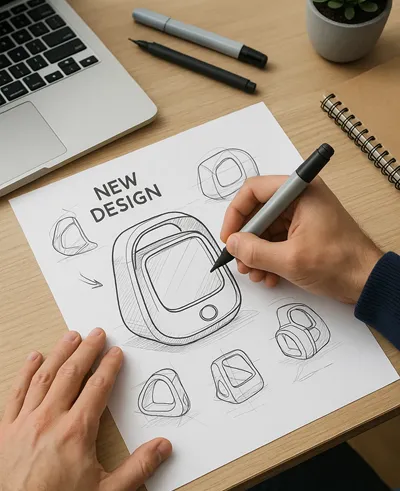The Designs Act, 2000 aims at protecting an outer appearance or features of products, such as shape, pattern, lines, or colours that make the product attractive and differential from an otherwise similar item. It helps designers and businesses secure legal rights over a distinctive look of their products from others so that they cannot copy.
Protection can only be given when the design has neither been manufactured nor published before. The design, once registered, gives exclusive rights to the designer to use that design for a period of 10 years, which can be extended for another 5 years.
The Act stimulates creativity across various industries like fashion, packaging, homeware, jewellery, and consumables by protecting and providing legal acknowledgement for innovative designs.
Key Highlights
- Protects the visual appearance of products (not how they work).
- Design must be new and original to be registered.
- Grants exclusive rights for 10 years, extendable by 5 more years.
- Encourages innovation in creative industries like fashion, packaging, etc.
- Helps designers and businesses legally stop design imitation.
Designs Act, 2000 – FAQs
-
1. What is a design under this law?
-
A design means how something looks—its shape, pattern, lines, or colours—not how it works.
-
2. Why should I register my design?
-
To stop others from copying or selling products with your design without your permission.
-
3. Who can register a design?
-
Anyone who creates a new and original design—individuals, businesses, or designers.
-
4. How long is the protection valid?
-
10 years from the registration date. It can be renewed once for 5 more years.
-
5. Can I register a design that’s already used in the market?
-
No. The design must be new and not published or used before the filing date.
-
6. How do I apply to register my design?
-
File an application with the Design Wing of the Indian Patent Office. You can do it online or through a registered agent.
-
7. Can I register the design of clothes or jewellery?
-
Yes, if the design is original and not just a functional feature.
-
8. What happens if someone copies my registered design?
-
You can file a legal case and seek damages or stop them from using your design.
-
9. Can I sell or license my registered design?
-
Yes, you can transfer the rights or allow others to use it legally for a fee.
-
10. Is the Designs Act different from copyright or patent laws?
-
Yes. This law protects the look of a product, not the idea (patent) or content (copyright).
-
11. Can two people have rights over the same design?
-
No, only the person who first files and gets it registered has the legal rights.
-
12. Can I register a logo under this Act?
-
No. Logos are protected under the Trade Marks Act, not the Designs Act.
-
13. Can I renew a design after 15 years?
-
No. The maximum protection is for 15 years (10 years + a 5-year extension).
-
14. Is registration valid outside India?
-
No. You need to register the design in each country where you want protection.
-
15. Can I design a product for someone else and let them register it?
-
Yes, but the agreement must clearly state who owns the design rights.
-
16. Do I need a lawyer to file a design registration?
-
Not necessary, but using a patent/design agent can make the process easier.
-
17. Can packaging or bottles be registered as designs?
-
Yes, if the shape or appearance is unique.
-
18. What is not covered under the Designs Act?
-
Anything related to how a product works or any design used only for technical function.
-
19. What if someone slightly changes my design and copies it?
-
If the overall look is the same, you can still take legal action.
-
20. Is design registration public or private?
-
Once registered, the design becomes part of the public record and can be seen by others.

Comments